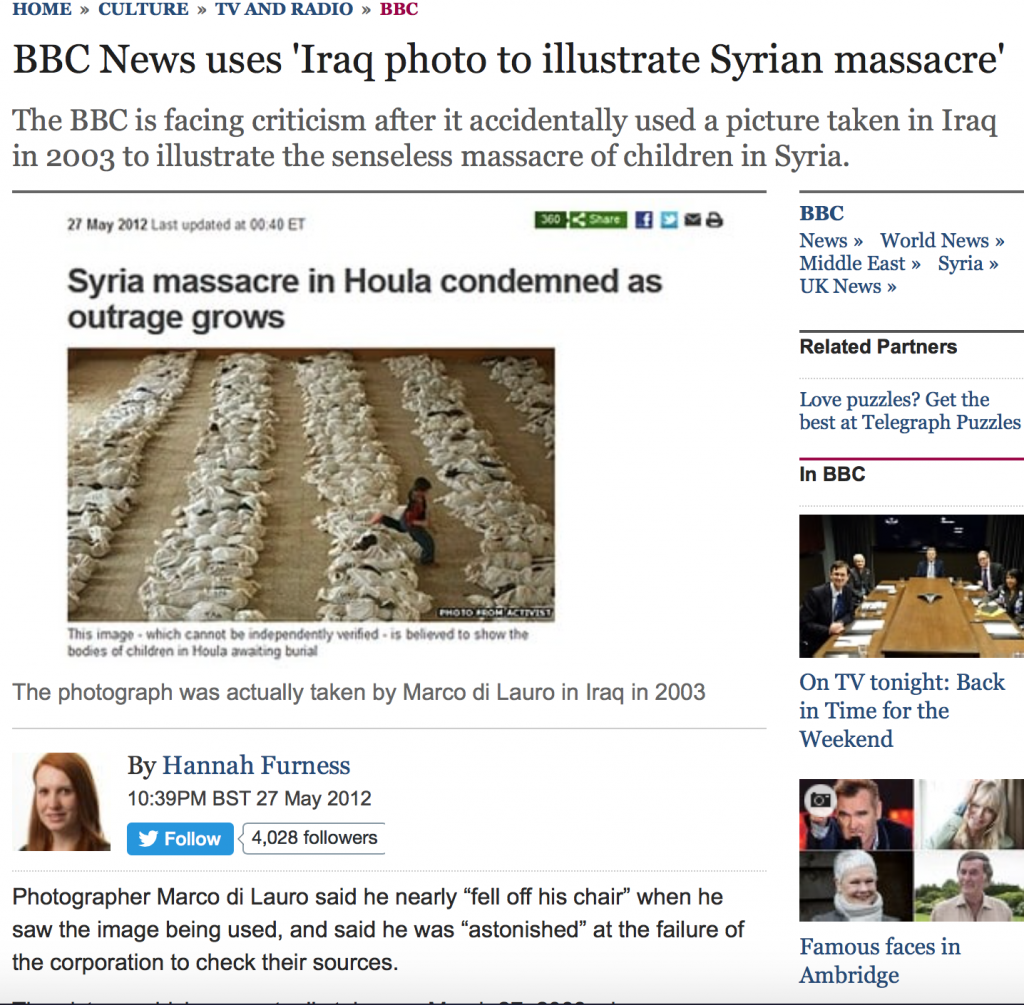|
First published on May 28, 2012
The British Broadcasting Corporation (BBC) has been slammed for mistakenly using a photo taken in Iraq in 2003 to illustrate the Syria 2012 massacre, in which over 100 people, including 32 children, were brutally killed.
The picture, taken on March 27, 2003, showed a young Iraqi child jumping over dozens of white body bags containing skeletons found in a desert south of Baghdad.
It was posted on the BBC news website under the heading “Syria massacre in Houla condemned as outrage grows”.
According to The Telegraph, the caption stated the photograph was provided by an activist and cannot be independently verified, but said it is “believed to show the bodies of children in Houla awaiting burial”.

A BBC spokesman said the image has now been removed from the website.
“We were aware of this image being widely circulated on the internet in the early hours of this morning following the most recent atrocities in Syria. We used it with a clear disclaimer saying it could not be independently verified,” the spokesman said.
“Efforts were made overnight to track down the original source of the image and when it was established the picture was inaccurate we removed it immediately,” he added.
Meanwhile, a professional photographer, Marco di Lauro, said he nearly “fell off his chair” when he saw the image being used, and said he was “astonished” at the failure of the corporation to check their sources.
“What I am really astonished by is that a news organization like the BBC doesn’t check the sources and it’s willing to publish any picture sent it by anyone activist, citizen journalist or whatever. That’s all,” the paper quoted him, as saying. (ANI)
|